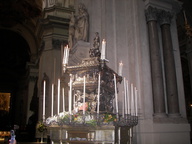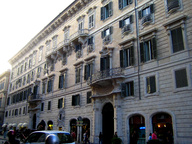Mosaic floor
Guida Aquileia

bb
- Location: Mosaic floor
- Date: 313
Discovered between the end of the nineteenth century and the first decades of the twentieth century, the mosaic floor of the Basilica of Aquileia represents one of the most spectacular testimonies of the ancient early Christian complex.
Originally the building consisted of three classrooms, one of which is now visible in the Crypt of the excavations, a baptistery and other rooms probably connected to the bishop's residence.
In the South Hall it is possible to admire the largest mosaic floor in all of the Roman West: on its 760 square meters of extension, we can recognize symbolic images and figurative allegories that indicated the way to salvation to the faithful. An inscription pays homage to Bishop Theodore, who had the basilica built in the aftermath of the Edict of Tolerance in 313 AD.
Originally the building consisted of three classrooms, one of which is now visible in the Crypt of the excavations, a baptistery and other rooms probably connected to the bishop's residence.
In the South Hall it is possible to admire the largest mosaic floor in all of the Roman West: on its 760 square meters of extension, we can recognize symbolic images and figurative allegories that indicated the way to salvation to the faithful. An inscription pays homage to Bishop Theodore, who had the basilica built in the aftermath of the Edict of Tolerance in 313 AD.



